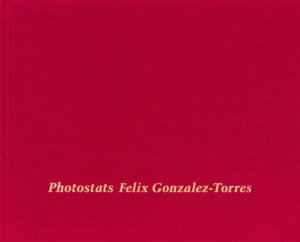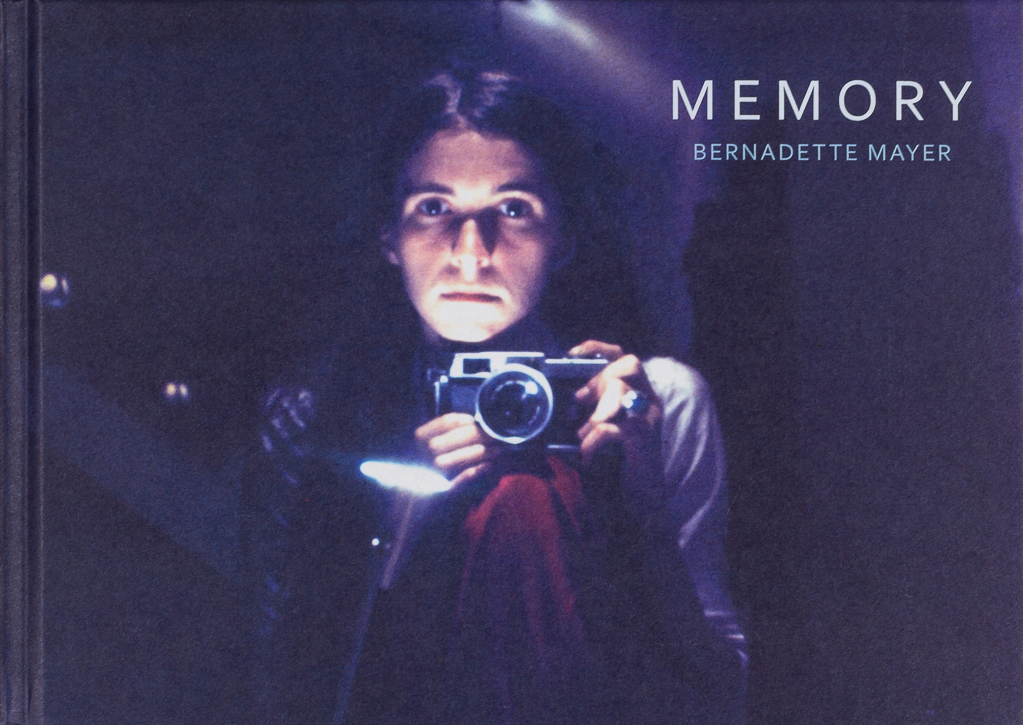Photostats
Felix Gonzalez-Torres
Edited by Richard Kraft and Lisa Pearson with writings by Mónica de la Torre and Ann Lauterbach

clothbound, 8.25 x 6.5 in.
88 pages, 28 halftones
978-1-938221-26-2
published in 2020
To my mind, [the photostats] are best described as concrete poems that speak to the ethics of memory in a culture of coerced and embodied forgetting; collages of remembering, naming, and the contention of individual existence, particularly that of the marginalized and dispossessed … They will take your breath away. Gonzalez-Torres took the constructs of linear history, authority, and authorship and stretched them open into living fields that impel the viewer’s awareness of her presence and participation.
—Elizabeth Zuba, Hyperallergic
An artist whose beautiful, restrained and often mutable works are abundant in compelling contradictions, Felix Gonzalez-Torres (1957−1996) was committed to a democratic form of art informed as much by aesthetic and conceptual concerns as by politics. His work eschews the polemical and didactic, while challenging authority and our obeisance to it, dissolving the delineations between public and private, and inviting the viewer to collaborate and complete works with her own inferences, point of view, imagination, and actions.
Made at the height of the AIDS crisis, in a pre-internet era, the photostats—a series of fixed works with white serif text on black fields framed behind glass to create a reflective surface—are profoundly suggestive lists of political, cultural, and historical references. These works disrupt linear time, the seemingly causal relationships of chronology, and hierarchies of information as they ask how we receive and prioritize information, how we remember and forget, and how we continuously create new meaning. The photostats have a deep kinship with poetry in their use of specificity and ambiguity, operating as open fields: each juxtaposition and its oblique friction illuminates connections and disconnections.
The photostats also recall the screen—the television, and now the computer and phone—in which information is furiously delivered, and we are challenged to parse substance from surface, what we choose to assimilate from what we choose to reject. In the gallery, the glass surface of the framed photostats brings the viewer into an intimate relationship with the work as she may literally see herself in it—reflecting, too, her own assumptions. Now, as we find ourselves thirty years later, in a global pandemic, with a national reckoning in the face of enduring protests against police brutality and racial injustice, there is more to see of ourselves in the photostats and their uncanny multiplicity: layers of history with which we are only beginning to grapple as a society, grief in the wake of devastating loss, and the possibility of reinvention and regeneration.
Intended as discrete space to closely read the photostats with sustained attention, this elegant, clothbound volume opens from both sides: on one side, the framed photostats are reproduced as objects as one might encounter them in a gallery; on the other, white texts appear on full-bleed black fields to be read as writing. Its intimate size and its attention to the book as a physical object create a new way to experience the photostats.
In between the two sides, there are gorgeous and thought-provoking writings by poets Mónica de la Torre and Ann Lauterbach that do not explicate the work but instead enter it. Lauterbach penetrates the atmosphere of the photostats, contemplating mourning and memory while invoking Gonzalez-Torres’s spirit of generosity. De la Torre mines Gonzalez-Torres’s dates and references in her constraint-based essay, tracing time from past to present, while keenly attentive to the impossibility of linearity. Both demonstrate the richness of the work and its potential to inspire multiple readings.
read
Mónica de la Torre’s “To Be an Infiltrator” at The Paris Review
Ann Lauterbach’s “Untitled (Event)” at the Yale Review
Lewis Hyde writing about Gonzalez-Torres and the photostats in New York Review of Books
Anne K. Yoder’s meditation on photostats at The Millions
Coeditor Lisa Pearson on making the book Photostats at Art Resources Transfer
about the artist
More information about FELIX GONZALEZ-TORRES including multiple biographies can be found at the Felix Gonzalez-Torres Foundation.
press
In considering these fragmented histories, what becomes apparent is what’s so easily forgotten. Photostats reveals how the past still lives on, only reinvented. I’m wondering, when will there be an intervention, a disruption, a reckoning with the current trajectory we’ve taken? Perhaps it begins with the 2020 elections and becomes something we enact daily.
—Anne K. Yoder, The Millions
Felix Gonzalez-Torres: Photostats offers its own formal conceit, presenting the series in two symmetrical and mirrored halves, each with thirteen plates, an installation view, and an essay. From one side of the book, the works appear in detail, printed full-bleed on matte stock; from the other, they are shown framed and printed glossy. In lieu of an art historical exegesis, Mónica de la Torre and Ann Lauterbach extend the associative logic of the photostats into lyrical musings on the ever-compounding layers of history embedded and reflected in the work. Consistent with the artist’s approach, the volume avoids definitive representation, instead providing multiple ways into the artworks. In the middle of another pandemic fueled by government neglect, Gonzalez-Torres’s investigations into the contigencies and coincidences of history resound with urgency.
—Kyle Croft, Bookforum
The quiet contemplation and implied poetry of Gonzalez-Torres’s photostats make their re-emergence in this moment of worldwide reckoning on racial justice and equity, alongside a global health pandemic, like a call to action. While our collective culture has seemingly forgotten the impact of the massive and multiple losses during the AIDS crisis, Photostats encourages us to remember our duty of care to the most vulnerable. We are each other’s keeper.
—Lee Ann Norman, The Brooklyn Rail
see also
✼ elsewhere:
“In my opinion, genre is a way of speaking about conventions of reading and looking, where you sit or stand and whether you’re allowed to talk to other people or move around while you’re communing with an object or text.” —Lucy Ives, from her interview with Karla Kelsey in Feminist Poetics of the Archive at Tupelo Quarterly
[...]
